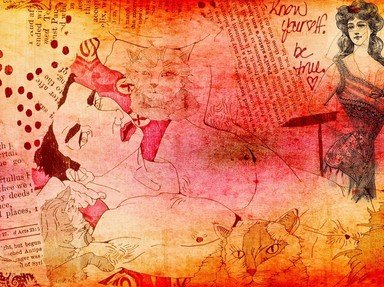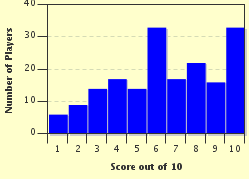Quiz Answer Key and Fun Facts
1. This type of firing, also a type of soup, is usually only the first firing of two or more. This firing changes greenware (raw clay) into ceramic material (essentially, a rock) by burning away organic material and water.
2. Cones refer to the temperature at which a firing is conducted. If you were to think in terms of a number line, cones start at 022 (pronounced oh-22) on the left, moving right to 01 (oh-1), (skipping zero) right to cone 1, and continuing on right to cone 10. Cone 022 is about 1000 degrees Fahrenheit, and each cone increases until cone 10, which is about 2300 degrees Fahrenheit. Now, knowing all this, what does the term "cone" come from?
3. Essentially, a glaze is a liquid that is applied to bisque-ware, which is then fired into a glass-like coating which is both decorative and functional. While the chemical make-up of glazes varies greatly, there are three general ingredients to a typical glaze. What are they?
4. This type of glaze firing is fast, and is a low fire (about cone 08-04). After reaching the desired heat, the pot is removed from the kiln (similar to an oven) still glowing red hot, placed into some sort of combustible material (paper, leaves, sawdust etc.) and allowed to cool.
5. I first learned about the next answer in chemistry. In ceramics, it refers to two different ways of firing that rely on oxygen in the atmosphere or in the clay. (Don't overthink this one.)
6. What is the name of a type of ceramic box that acts like a miniature atmosphere within a larger kiln, protecting the pieces from the main atmosphere, or concentrating effects of chemicals?
7. This technique of firing predates kilns. Unfired pottery is placed in a hole in the ground, covered with combustible materials such as leaves, salt, grass, manure, and wood, and then set on fire.
8. The process of firing burns away organic materials such as paper, impurities, and mold, as well as water. By how much is the overall volume of the pot reduced?
9. This element, now known to be dangerous to one's health, used to be extensively used in glazes (and paints) for the colors and effects it can create. Due to environmental regulations, it is nowadays used far less often, and sometimes not at all.
10. Porcelain is made of the purest and finest particles, it's very difficult to work with, and is expensive. It is also extremely strong and durable, and skilled artisans can make porcelain pots so thin that light can be seen through the pot. What kind of temperatures is porcelain usually subjected to?
Source: Author
adamantmuse
This quiz was reviewed by FunTrivia editor
WesleyCrusher before going online.
Any errors found in FunTrivia content are routinely corrected through our feedback system.

